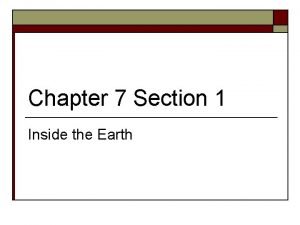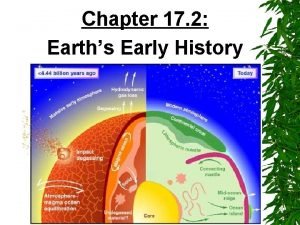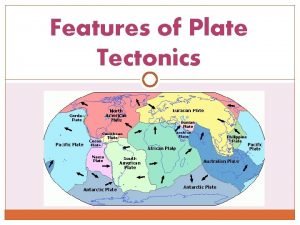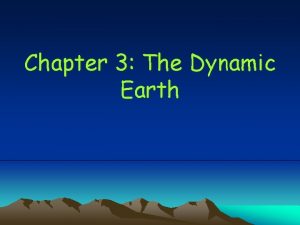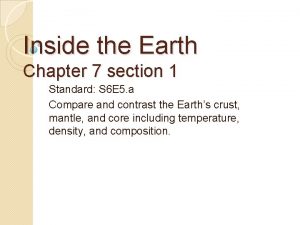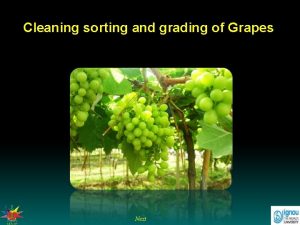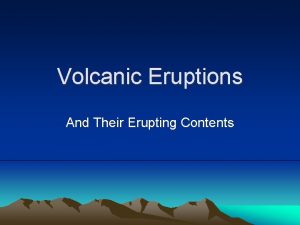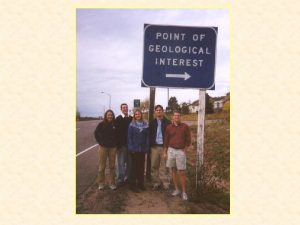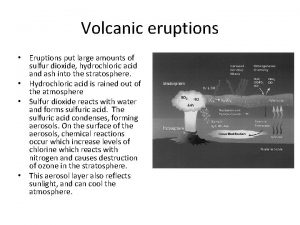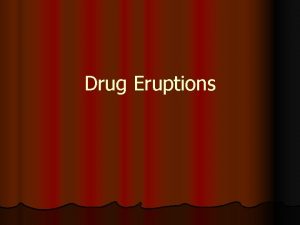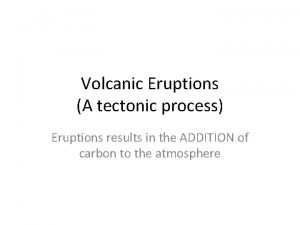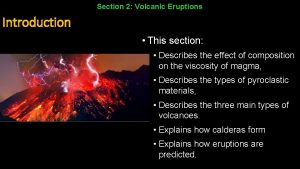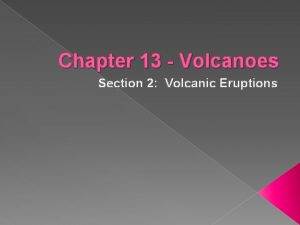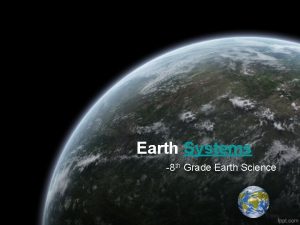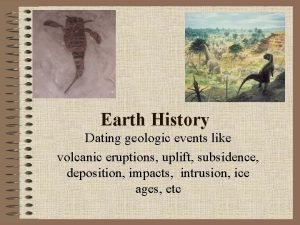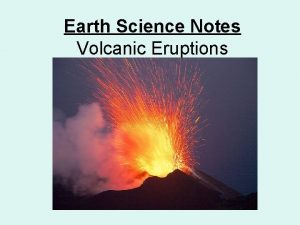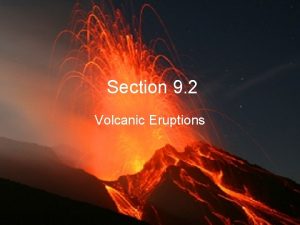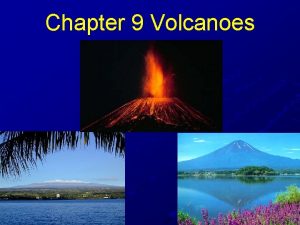Section 18 2 Eruptions 8 th Grade Earth
















- Slides: 16

Section 18. 2 - Eruptions 8 th Grade Earth and Space Science Class Notes

Making Magma • The type of eruption depends on the composition of the magma. • Temperature – Most rocks melt between 8001200 degrees C; temperature increases with depth; pressure and water affect magma formation • Pressure – Pressure increases with depth; melting points of rocks increases with depth

Composition of Magma • Explosivity – how a volcano erupts and how its magma flows (ultimately determined by the make-up of the magma) • Factors – Interaction with overlying crust – Temperature – Pressure – Dissolved gases – Silica content

Dissolved Gases • As the amount of gases increases, the magma’s explosivity increases • Important gases: – Carbon dioxide – Water vapor (most common) – Sulfur dioxide – Hydrogen sulfide

Viscosity • Viscosity – physical property that describes a material’s resistance to flow • Cooler magma = higher viscosity • High silica = higher viscosity – Tends to trap gases and produces explosive eruptions

Types of Magma • The silica content of magma determines not only its explosivity and viscosity, but also which type of volcanic rock it forms as it cools • Three types: – Basaltic – Andesitic – Rhyolitic

Basaltic Magma • • Usually forms from rock in the upper mantle Less than 50% silica – low viscosity Gases escape easily Quiet eruptions • Examples – Mauna Loa, Kilauea, Surtsey

Basaltic Magma Basaltic lava flow from Kilauea in Hawaii

Andesitic Magma • 50 -60% silica • Found along oceanic-continental subduction zones • Forms from oceanic crust or oceanic sediments • Intermediate viscosity • Intermediate explosivity • Examples – Colima, Tambora

Andesitic Magma Andesitic lava flow from Washburn in Yellowstone

Rhyolitic Magma • Molten material that rises and is mixed with continental crust (rich in water and silica) • More than 60% silica • High viscosity • Large amount of trapped gases • Very explosive • Example – Yellowstone National Park

Rhyolitic Magma

Explosive Eruptions • When lava is too viscous to flow freely from the vent, pressure builds up in the lava until the volcano explodes • Tephra – erupted materials given off by the volcano; can be pieces of solidified lava or pieces of crust

Tephra • Classified by size • Smallest – ash – Can rise very far in the air – Threatens aircrafts – Can affect weather • Largest – blocks – Can be as large as a car

Pyroclastic Flows • Pyroclastic flow – rapidly moving clouds of tephra mixed with hot, suffocating gases • Can reach temperatures of 700 degrees C • Can move at more than 200 km/h

Pyroclastic Flows
 Earth science grade 9
Earth science grade 9 Fcat science 8th grade
Fcat science 8th grade Grade 5 natural science term 1
Grade 5 natural science term 1 Stored solar energy grade 7
Stored solar energy grade 7 Section 17-2 earth's early history
Section 17-2 earth's early history In what section of earth do earthquakes happen?
In what section of earth do earthquakes happen? Chapter 7 section 1 inside the earth answer key
Chapter 7 section 1 inside the earth answer key Chapter 7 section 1 inside the earth answer key
Chapter 7 section 1 inside the earth answer key Section 17-2 earth's early history
Section 17-2 earth's early history Earth cross section diagram
Earth cross section diagram Chapter 3 the dynamic earth section 1 the geosphere
Chapter 3 the dynamic earth section 1 the geosphere Composition of the earth's crust
Composition of the earth's crust Transmuted grade
Transmuted grade Jump rope songs cinderella
Jump rope songs cinderella Difference between grade a and grade aa eggs
Difference between grade a and grade aa eggs Grade a vs grade b milk
Grade a vs grade b milk Grading of grapes
Grading of grapes







